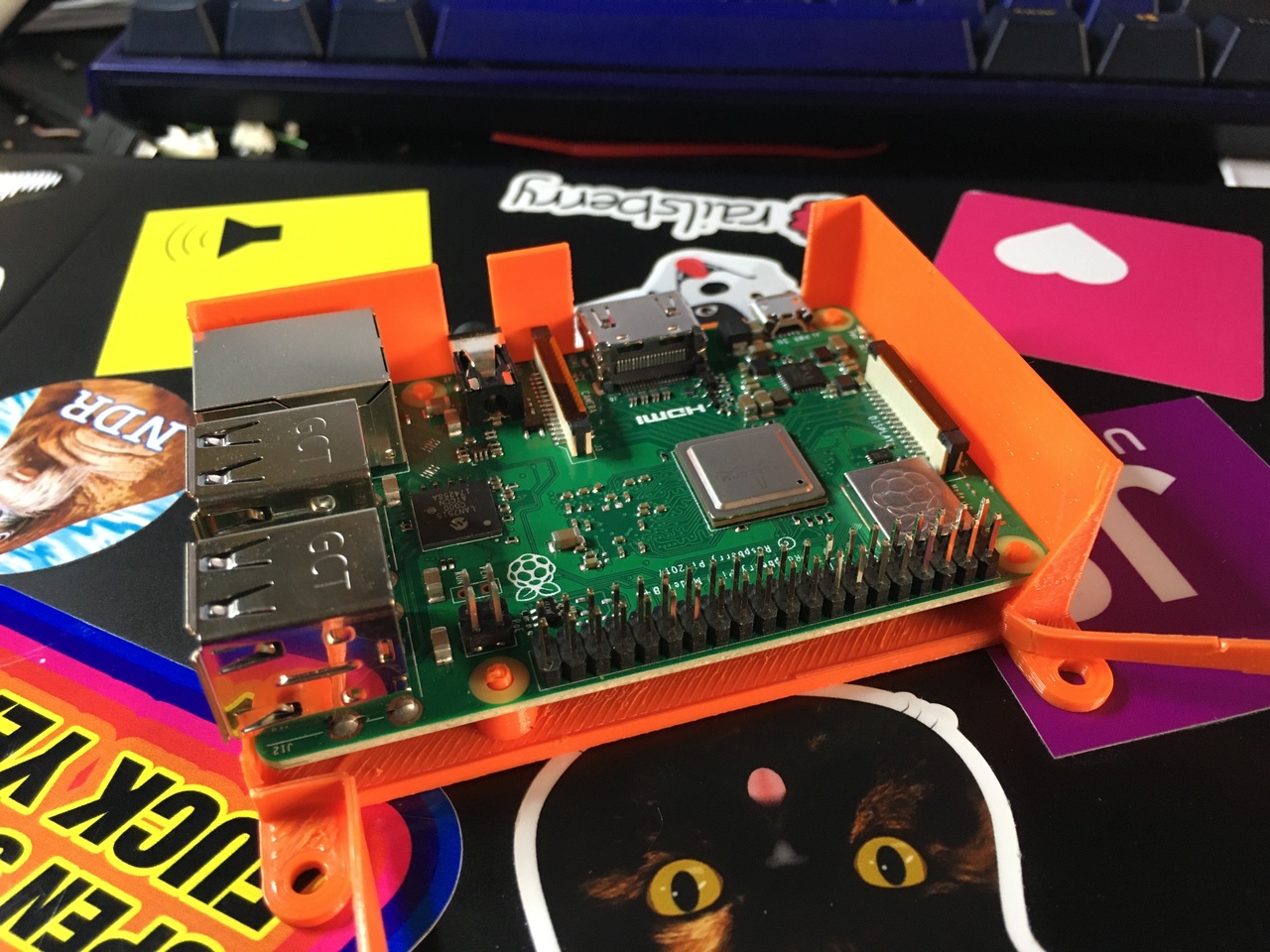RaspberryPi case, second iteration
After figuring out the initial problem with my base plate, I figured I could go all in and design a full housing. After wresting a bit with Fusion's components which I think I still haven't fully figured out, I printed a second try of the bottom half of the case to see if I correctly measured all the holes in the walls. This time, I ran into other issues:
- A wall thickness of 1mm looks cool, but specifically for the thin strips between the USB ports (not that those are especially important), 2mm is probably a better compromise.
- The thin poles I use to stick through the Pi's mounting holes are a bit too thick and could probably do with a bit of a taper
- The overall clearance of the walls could be a bit more generous (read: A lot more generous :)
The case in the picture is intentionally destroyed to check the clearance on the bottom...

Also, I finally figured out (doh!) why my Das Filament filaments who have been printing wonderfully using the old Anet A8 extruder hotend have been stalling and clogging using the theoretically superiour Hemera extruder/hotend I installed recently. I haven't been measuring it in lack of a proper thermometer but my theory is that the old A8 thermistor was way off and so the hotend was about 10-15 Kelvin (yeah...) hotter than it should be which lead me to reduce the temperatures for certain filaments in my printing profiles. After raising these temperature significantly, both my Das Filament PLAs print properly again. Bit of a facepalm there.
Which makes me think that I should probably spend some time dialling in my filaments a bit more.